The Solomon Islands, located in the southwestern Pacific Ocean, is a tropical paradise that boasts a diverse range of flora and fauna. The archipelago is made up of six major islands and over 900 smaller islands, each with its own unique ecosystem.
The region is known for its lush rainforests, pristine beaches, and crystal-clear waters. The climate is tropical, with temperatures ranging from 24 to 30 degrees Celsius year-round.
The islands are home to a variety of exotic animals, including birds of paradise, flying foxes, and sea turtles. The marine life is equally impressive, with colorful coral reefs and a plethora of fish species.
Despite its small size, the Solomon Islands is a biodiversity hotspot, with many species found nowhere else in the world. .
Types Of Ants In Solomon Islands
The Types Of Ants In Solomon Islands are listed here: Adelomyrmex, Amblyopone, Trap-Jaw Ants, Anonychomyrma, Brachyponera, Carpenter And Sugar Ants, Marauder Ants, Colobostruma, Acrobat Ants, Cryptic Ants, Ectomomyrmex, Razorjaw Ants, Mesoponera, Trailing Pharaoh And Timid Ants, Myopopone, Mite-Eating Ants, Crazy Ants, Trap-Jaw Ants, Oecophylla, Opisthopsis, Paraparatrechina, Crazy Ants, Parvaponera, Big Headed Ants, Platythyrea, Spiny Ants, Porthole Ants, Pristomyrmex, Probolomyrmex, Pseudoponera, Ponerine Ants, Sphinctomyrmex, Vampire Ants, Miniature Trap-Jaw Ants, Syllophopsis, Tapinoma, Pavement Ants, Old World Slender Ants, Rover Ants, Urban Alate Ants, Flower Ants, Pharaoh Ants, Crazy Ants, Crazy Ants, Longhorn Crazy Ants, Big Headed Ants, Pan-Tropical Panther Ants, Miniature Trap-Jaw Ants, Miniature Trap-Jaw Ants, Miniature Trap-Jaw Ants, Ghost Ants, Pavement Ants, Groove-Headed Fierce Ants, Little Fire Ants.
If you’ve found some other ants in this region, contact us, and we will add them to the list!
1) Adelomyrmex
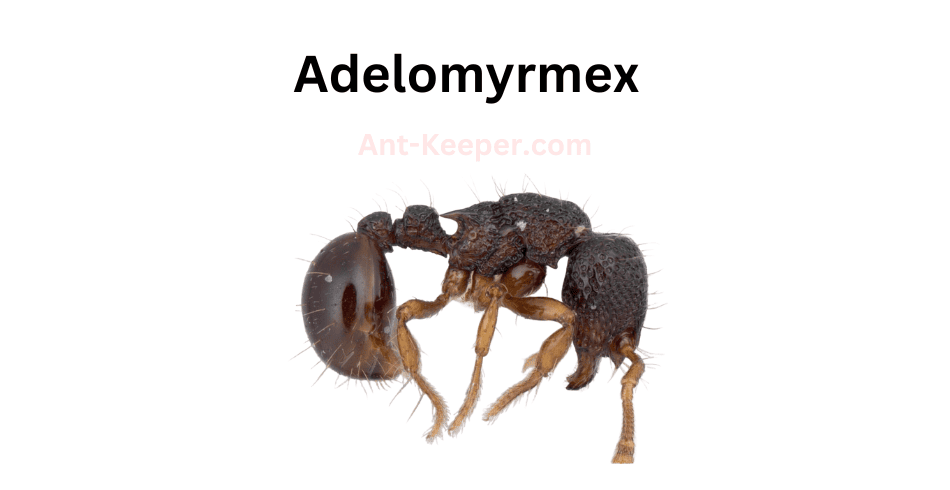
Adelomyrmex is a genus of ants that belongs to the subfamily Myrmicinae.
These ants are known for their unique morphology and behavior.
Adelomyrmex ants are small in size, measuring between 2 to 4 millimeters in length.
They have a distinctive appearance, with a slender body and long legs.
The head of Adelomyrmex ants is elongated and narrow, with large compound eyes and long antennae.
Adelomyrmex ants are social insects that live in colonies.
The colonies are usually small, consisting of a few hundred individuals.
The colonies are typically found in the soil, under rocks, or in dead wood.
Adelomyrmex ants are known for their aggressive behavior towards other ant species.
They will attack and kill other ants that invade their territory.
Adelomyrmex ants are omnivorous, feeding on a variety of food sources.
They will consume insects, nectar, and honeydew produced by aphids.
Adelomyrmex ants are also known to tend to mealybugs, protecting them from predators in exchange for their sweet secretions.
The reproductive system of Adelomyrmex ants is unique.
The colonies are headed by a single queen, who is responsible for laying eggs.
However, the queen does not mate with males.
Instead, she reproduces asexually, producing genetically identical offspring.
In conclusion, Adelomyrmex ants are fascinating insects with unique morphology and behavior.
They are aggressive towards other ant species and have a unique reproductive system.
These ants play an important role in their ecosystem, consuming insects and tending to mealybugs.
2) Amblyopone
Amblyoponebe is a species of ant that belongs to the Amblyoponinae subfamily.
These ants are known for their unique physical characteristics, including their elongated mandibles and flattened heads.
They are typically small in size, measuring only a few millimeters in length.
Amblyoponebe ants are primarily found in forested areas, where they live in underground nests.
They are known to be solitary hunters, preying on other insects and arthropods.
Their elongated mandibles are used to capture and subdue their prey, which they then carry back to their nests to feed on.
Despite their small size, Amblyoponebe ants are known for their aggressive behavior.
They are not afraid to defend their nests and will attack any intruders that come too close.
This makes them a formidable opponent for other insects and animals that may try to invade their territory.
Overall, Amblyoponebe ants are a fascinating species that play an important role in their ecosystem.
Their unique physical characteristics and aggressive behavior make them a fascinating subject for researchers and nature enthusiasts alike.
3) Trap-Jaw Ants, Anochetus
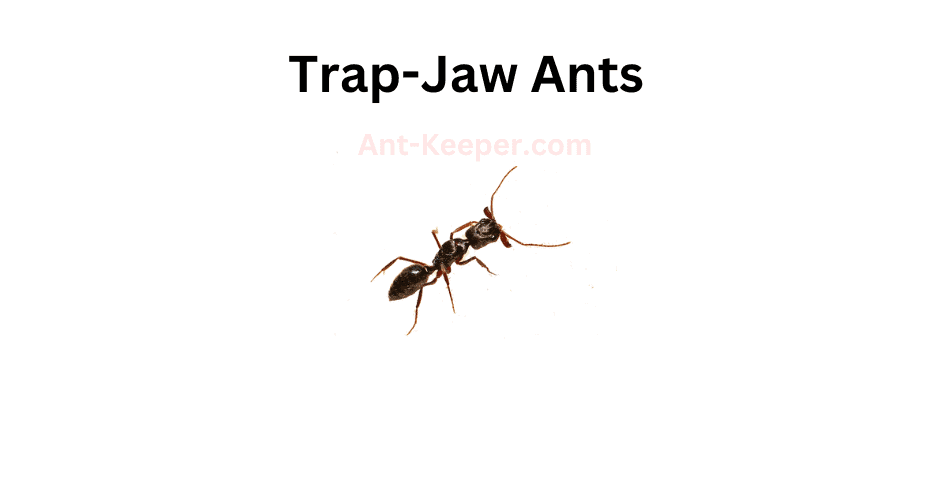
Trap-jaw ants are a species of ants that belong to the genus Odontomachus.
These ants are known for their unique and powerful mandibles, which they use to capture prey and defend their colonies.
The mandibles of trap-jaw ants are capable of closing at incredible speeds, reaching up to 140 miles per hour.
This allows them to snap their jaws shut with incredible force, which can stun or kill their prey.
Trap-jaw ants are found in a variety of habitats, including forests, grasslands, and deserts.
They are typically active during the day and are known to be highly territorial.
These ants are also known for their ability to jump, which they use to escape danger or to capture prey.
Trap-jaw ants are omnivorous, meaning that they eat both plant and animal matter.
They are known to feed on a variety of insects, including other ants, as well as nectar and other sweet substances.
These ants are also known to be scavengers, feeding on dead insects and other organic matter.
The colonies of trap-jaw ants are typically small, with only a few hundred individuals.
However, they are highly organized and have a strict social hierarchy.
The queen is the largest member of the colony and is responsible for laying eggs.
The workers, which are all female, are responsible for foraging, caring for the young, and defending the colony.
Overall, trap-jaw ants are fascinating creatures that have evolved unique adaptations to help them survive in their environments.
Their powerful mandibles and jumping abilities make them formidable predators, while their social organization allows them to work together to protect their colonies and ensure their survival.
4) Anonychomyrma
Anonychomyrmabe is a species of ant that belongs to the Formicidae family.
These ants are known for their unique physical characteristics, including their elongated mandibles and slender bodies.
They are typically found in forested areas and are known to be active during the day.
One of the most interesting aspects of Anonychomyrmabe is their social behavior.
They live in colonies that can range in size from a few dozen to several hundred individuals.
Within these colonies, there is a strict hierarchy, with the queen ant at the top.
The queen is responsible for laying eggs, while the other ants in the colony take care of the young and gather food.
Anonychomyrmabe is an omnivorous species, meaning that they eat both plants and animals.
They are known to feed on a variety of insects, as well as fruits and seeds.
They are also known to engage in a behavior called trophallaxis, where they exchange food with other members of the colony.
Despite their small size, Anonychomyrmabe plays an important role in their ecosystem.
They help to control the populations of other insects and contribute to the nutrient cycling process by breaking down organic matter.
Overall, Anonychomyrmabe is a fascinating species of ant that exhibits unique physical and social behaviors.
Their importance in their ecosystem highlights the importance of understanding and protecting all species, no matter how small they may be.
5) Brachyponera
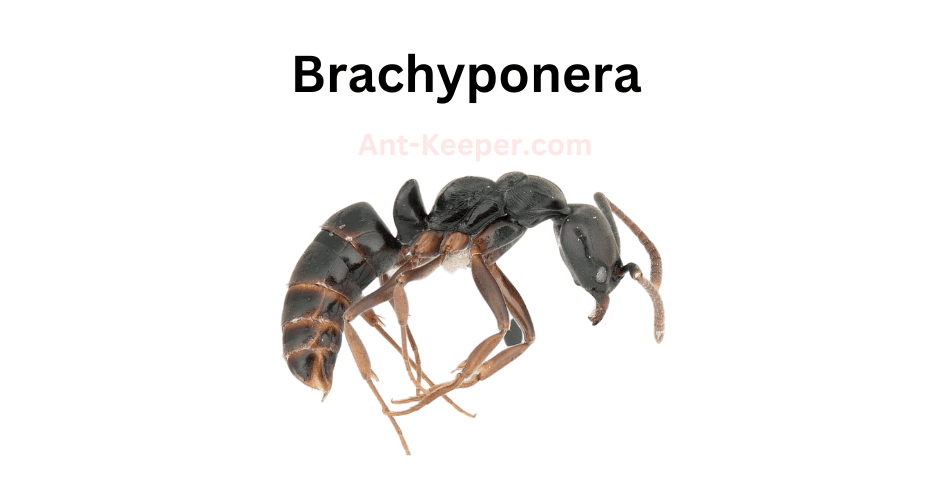
Brachyponera is a genus of ants belonging to the subfamily Ponerinae.
One of the species in this genus is Brachyponera sennaarensis, commonly known as the Sennaar ant.
These ants are relatively large, measuring up to 12mm in length, and are known for their aggressive behavior.
The workers of Brachyponera sennaarensis are dark brown in color and have a shiny exoskeleton.
They have a powerful sting and are known to attack other insects and even small vertebrates.
These ants are also known to forage for food in large groups, and can quickly overwhelm their prey.
Brachyponera sennaarensis is found in a variety of habitats, including forests, grasslands, and deserts.
They are known to build their nests in soil, under rocks, and in tree trunks.
These ants are also known to be nocturnal, and are most active during the night.
Despite their aggressive behavior, Brachyponera sennaarensis is an important part of the ecosystem.
They help to control the population of other insects and play a vital role in the food chain.
However, their powerful sting and aggressive behavior make them a potential danger to humans and other animals.
6) Carpenter And Sugar Ants, Camponotus

Carpenter ants and sugar ants are two common species of ants found in many regions of the world.
Carpenter ants are known for their ability to excavate wood and create nests within it.
They are typically larger in size than sugar ants and have a black or dark brown coloration.
Carpenter ants are also known for their strong mandibles, which they use to chew through wood and other materials.
Sugar ants, on the other hand, are smaller in size and have a yellow or brown coloration.
They are named for their preference for sugary foods and are often found in kitchens and other areas where food is stored.
Sugar ants are also known for their ability to form large colonies, with thousands of individual ants working together to gather food and care for their young.
Both carpenter ants and sugar ants play important roles in their ecosystems.
Carpenter ants help to break down dead wood and other plant material, which helps to recycle nutrients back into the soil.
Sugar ants help to disperse seeds and pollinate plants, which helps to maintain healthy ecosystems.
However, both species can also be pests when they invade human homes and buildings.
Carpenter ants can cause damage to wooden structures, while sugar ants can contaminate food and be a nuisance to homeowners.
It is important to take steps to prevent ant infestations and to control them if they do occur, in order to protect both human health and the health of the environment.
7) Marauder Ants, Carebara
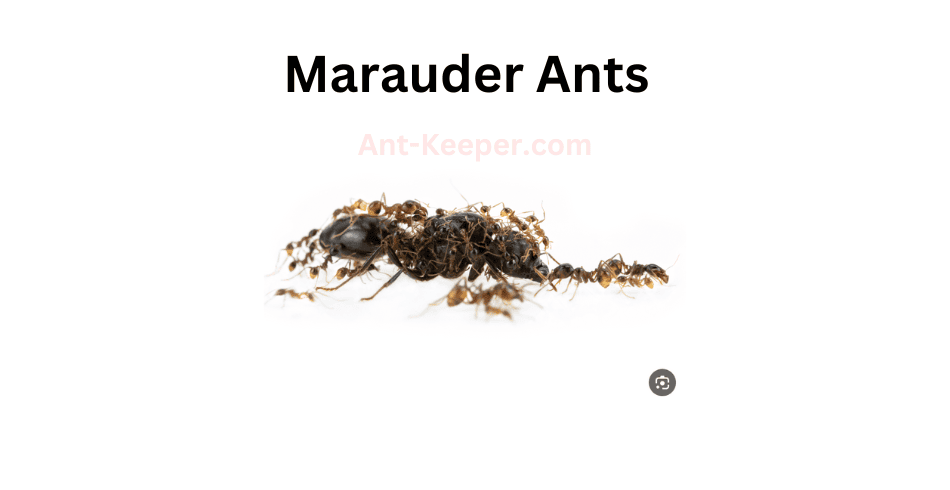
Marauder ants are a species of ants known for their aggressive behavior and large colony sizes.
They are typically found in tropical and subtropical regions, where they inhabit a variety of habitats including forests, grasslands, and urban areas.
These ants are known for their ability to raid other ant colonies and steal their resources, including food and brood.
They have powerful mandibles that allow them to overpower other ants and carry their prey back to their own colony.
Marauder ants are also known for their ability to adapt to changing environments.
They can quickly adjust their foraging patterns and nesting sites in response to changes in their surroundings, allowing them to thrive in a variety of habitats.
Despite their aggressive behavior, marauder ants play an important role in their ecosystems.
They help to control populations of other insects and contribute to nutrient cycling in the soil.
Overall, marauder ants are a fascinating species of ants that have adapted to thrive in a variety of environments.
Their aggressive behavior and large colony sizes make them a formidable force in the ant world.
8) Colobostruma
Colobostrumabe is a fascinating species of ant that belongs to the Formicidae family.
These ants are known for their unique physical characteristics and behavior, which make them stand out from other ant species.
One of the most distinctive features of Colobostrumabe ants is their elongated mandibles, which are used for a variety of purposes, including defense and hunting.
These ants are also known for their large size, with workers measuring up to 10 millimeters in length.
Colobostrumabe ants are social insects that live in colonies, with each colony consisting of a queen, workers, and soldiers.
The queen is responsible for laying eggs, while the workers and soldiers are responsible for maintaining the colony and protecting it from predators.
These ants are omnivorous, meaning that they feed on both plant and animal matter.
They are known to forage for food in groups, with workers and soldiers working together to bring food back to the colony.
One interesting behavior of Colobostrumabe ants is their ability to form symbiotic relationships with other insects.
For example, they have been known to form mutualistic relationships with aphids, which provide them with a source of honeydew in exchange for protection from predators.
Overall, Colobostrumabe ants are a fascinating species that continue to intrigue scientists and researchers around the world.
Their unique physical characteristics and behavior make them a valuable subject of study for those interested in the ecology and behavior of social insects.
9) Acrobat Ants, Crematogaster

Acrobat ants, also known as Crematogaster spp., are a genus of ants that are found in various parts of the world.
These ants are known for their unique ability to contort their bodies and move in acrobatic ways, hence their name.
Acrobat ants are relatively small, with workers measuring between 2-5mm in length.
They are typically brown or black in color, with a slender body and long legs.
These ants are known for their aggressive behavior and will readily defend their nests against intruders.
One of the most interesting features of acrobat ants is their ability to use their mandibles to grip onto surfaces and contort their bodies in unusual ways.
This allows them to move along narrow branches, twigs, and other surfaces that would be difficult for other ants to navigate.
They are also able to use this ability to escape from predators, such as birds and other insects.
Acrobat ants are omnivorous, meaning that they will eat both plant and animal matter.
They are known to feed on insects, nectar, and honeydew, as well as fruits and seeds.
These ants are also known to tend to aphids, protecting them from predators in exchange for the sweet honeydew that the aphids produce.
In terms of their social structure, acrobat ants are typically organized into colonies that are led by a queen.
The queen is responsible for laying eggs, while the workers are responsible for foraging, caring for the young, and defending the nest.
Overall, acrobat ants are fascinating creatures that have adapted unique abilities to survive in their environments.
Their acrobatic abilities and aggressive behavior make them a formidable force in the insect world.
10) Cryptic Ants, Cryptopone
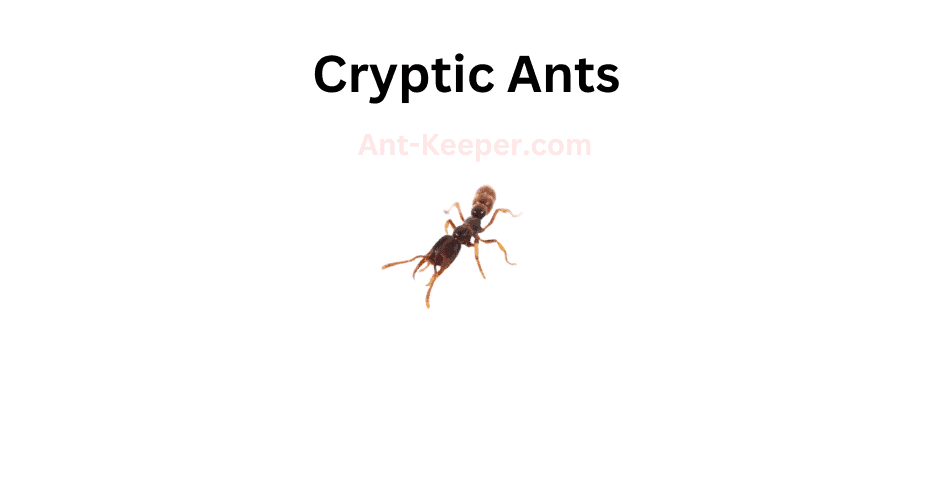
Cryptic ants are a species of ants that are known for their ability to blend in with their surroundings.
They are typically small in size, measuring only a few millimeters in length, and have a dark brown or black coloration that helps them to remain inconspicuous.
One of the most interesting features of cryptic ants is their ability to mimic the appearance of other insects.
For example, some species of cryptic ants have been observed mimicking the appearance of spiders, which helps them to avoid detection by predators that might otherwise prey on them.
Cryptic ants are also known for their highly social behavior.
They live in large colonies that can contain thousands of individuals, and they work together to gather food, care for their young, and defend their territory from other ants and predators.
Despite their small size, cryptic ants play an important role in their ecosystem.
They help to aerate the soil, control pest populations, and provide food for other animals.
In addition, they are an important food source for many birds and other predators.
Overall, cryptic ants are a fascinating species of ants that have evolved a number of unique adaptations to help them survive in their environment.
Their ability to blend in with their surroundings and mimic other insects is just one example of the many ways in which they have adapted to their surroundings over time.
11) Ectomomyrmex

Ectomomyrmex is a genus of ants belonging to the subfamily Myrmicinae.
These ants are known for their unique morphology and behavior.
They are small in size, measuring between 2-4 mm in length, and have a distinctive elongated head and mandibles.
The workers of this genus are polymorphic, meaning they come in different sizes and shapes.
Ectomomyrmex ants are primarily found in tropical and subtropical regions, where they inhabit forested areas.
They are known to be arboreal, meaning they live in trees and are often found on the branches and trunks of trees.
These ants are also known to be aggressive and territorial, often engaging in battles with other ant species.
One of the most interesting aspects of Ectomomyrmex ants is their symbiotic relationship with other organisms.
They are known to form mutualistic relationships with a variety of organisms, including plants, fungi, and insects.
For example, some species of Ectomomyrmex ants are known to cultivate fungi for food, while others are known to protect plants from herbivores in exchange for nectar.
Overall, Ectomomyrmex ants are a fascinating group of ants that exhibit unique morphology and behavior.
Their symbiotic relationships with other organisms make them an important part of many ecosystems, and their aggressive nature makes them a force to be reckoned with in the ant world.
12) Razorjaw Ants, Leptogenys
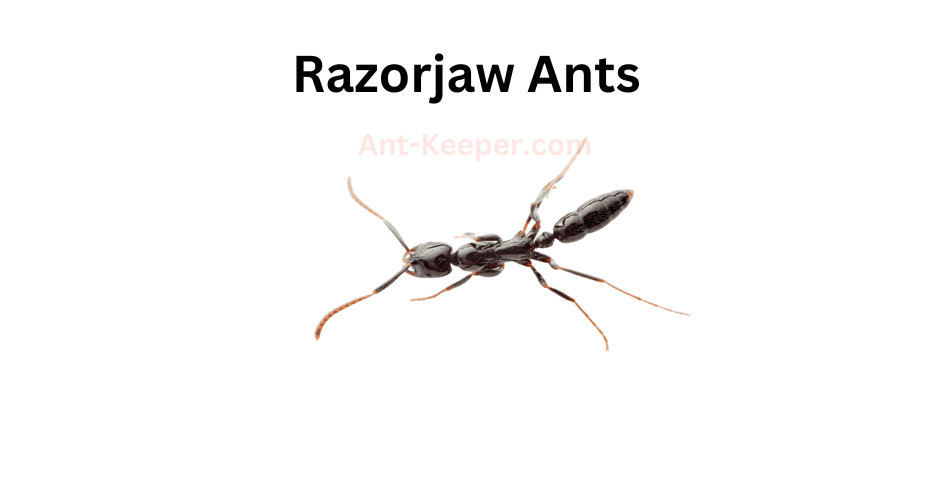
The Razorjaw Ant, also known as the Pachycondyla villosa, is a species of ant belonging to the subfamily Ponerinae.
These ants are known for their sharp mandibles, which are used for hunting and defense.
The workers of this species are typically around 8-10mm in length, while the queen can reach up to 15mm.
Razorjaw Ants are found in a variety of habitats, including forests, grasslands, and deserts.
They are known to be aggressive predators, feeding on a variety of insects and other arthropods.
These ants are also known to scavenge for food, and will even attack and kill other ant species to steal their food.
The nests of Razorjaw Ants are typically found in soil or leaf litter, and can be quite large.
The queen is responsible for laying eggs, and the workers are responsible for caring for the brood and maintaining the nest.
These ants are also known for their ability to defend their nest, and will aggressively attack any intruders.
Overall, the Razorjaw Ant is a fascinating species of ant known for its sharp mandibles, aggressive behavior, and impressive hunting skills.
13) Mesoponera
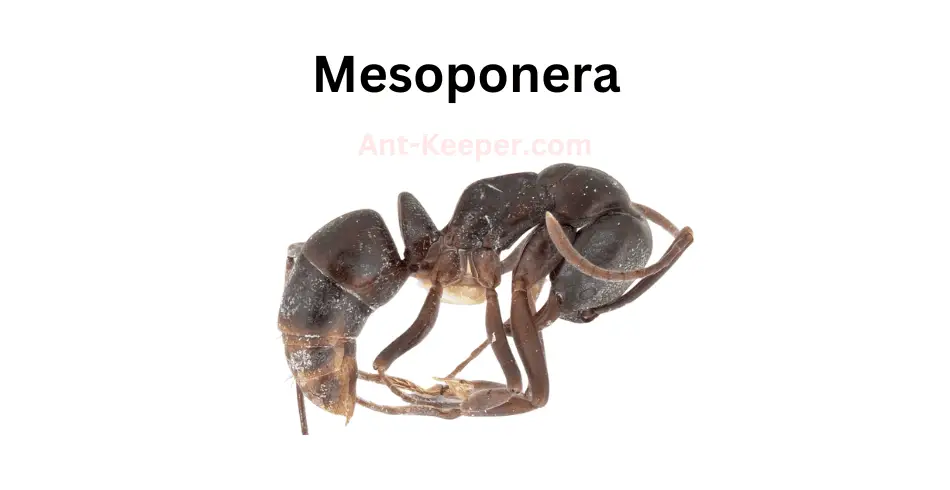
Mesoponera is a genus of ants belonging to the subfamily Ponerinae.
The species Mesoponera beccarii is a medium-sized ant with a dark brown to black coloration.
They are known for their aggressive behavior and are often found in forested areas.
Mesoponera beccarii is a solitary ant that lives in underground nests.
They are active during the day and forage for food on the forest floor.
Their diet consists of insects, spiders, and other small invertebrates.
The queen of Mesoponera beccarii is larger than the workers and is responsible for laying eggs.
The workers are responsible for caring for the brood, foraging for food, and defending the nest.
Mesoponera beccarii has a painful sting and is known to be aggressive towards intruders.
They are also known to engage in battles with other ant species over territory and resources.
Overall, Mesoponera beccarii is an interesting and important species in the ecosystem.
Their aggressive behavior and role in controlling insect populations make them an important part of the forest ecosystem.
14) Trailing Pharaoh And Timid Ants, Monomorium

The Trailing Pharaoh ant, also known as the Monomorium pharaonis, is a small, reddish-brown ant species that is commonly found in urban areas.
These ants are known for their ability to form large colonies, which can consist of thousands of individuals.
One interesting behavior of the Trailing Pharaoh ant is their tendency to trail behind other ants.
This behavior is thought to be a form of communication, as the trailing ants are able to follow the scent trail left by the leading ants.
This behavior is also used to locate food sources, as the trailing ants are able to follow the trail to the source of the food.
In contrast to the bold behavior of the Trailing Pharaoh ant, the Timid ant, also known as the Temnothorax species, is a much more cautious species.
These ants are small and brown, and are often found in wooded areas.
They are known for their timid behavior, and will often retreat into their nests when threatened.
Despite their timid nature, the Timid ant is still able to form large colonies.
They are also known for their ability to adapt to changing environments, and can be found in a variety of habitats, including forests, meadows, and even urban areas.
Overall, both the Trailing Pharaoh ant and the Timid ant are fascinating species that demonstrate unique behaviors and adaptations.
By studying these ants, scientists can gain a better understanding of the complex social behaviors and ecological roles of ants in their respective environments.
15) Myopopone
Myopoponebe is a species of ant that belongs to the family Formicidae.
These ants are known for their small size and unique physical characteristics.
They have a dark brown or black coloration and are typically less than 2 millimeters in length.
One of the most distinctive features of Myopoponebe ants is their mandibles.
These ants have long, curved mandibles that are used for hunting and defense.
They are also known for their ability to climb vertical surfaces, thanks to their strong legs and adhesive pads on their feet.
Myopoponebe ants are typically found in forested areas, where they live in small colonies.
They are known for their aggressive behavior and will defend their territory fiercely against other ants and predators.
Despite their small size, Myopoponebe ants play an important role in their ecosystem.
They are known to prey on other insects and help to control their populations.
They also help to aerate the soil and distribute nutrients, which can benefit plant growth.
Overall, Myopoponebe ants are a fascinating species that have adapted to their environment in unique ways.
Their small size and aggressive behavior make them a force to be reckoned with in the forest ecosystem.
16) Mite-Eating Ants, Myrmecina
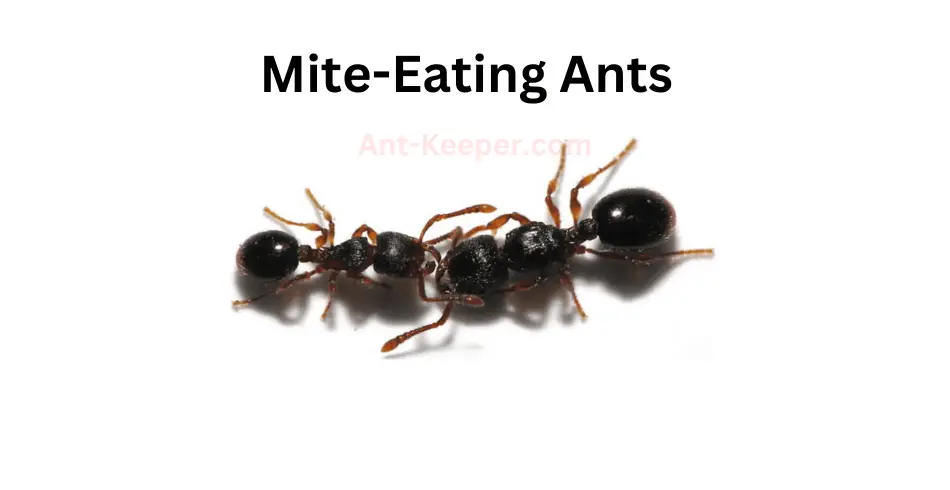
The Mite-Eating Ant, also known as the Pheidole megacephala, is a species of ant that is commonly found in tropical and subtropical regions around the world.
These ants are known for their unique feeding habits, as they primarily feed on mites and other small arthropods.
The Mite-Eating Ant is a relatively small ant, with workers measuring between 2-3mm in length.
They have a distinctive head shape, with a large and elongated head that is almost as wide as their thorax.
Their bodies are typically a reddish-brown color, with darker legs and antennae.
These ants are highly social, living in large colonies that can contain thousands of individuals.
The colonies are typically divided into two groups: workers and reproductive individuals.
The workers are responsible for foraging for food, caring for the young, and defending the colony, while the reproductive individuals are responsible for producing offspring.
One of the most interesting aspects of the Mite-Eating Ant is their feeding habits.
These ants are specialized predators, feeding almost exclusively on mites and other small arthropods.
They use their large mandibles to capture and kill their prey, and then carry it back to the colony to be consumed.
In addition to their unique feeding habits, the Mite-Eating Ant is also known for its ability to adapt to a wide range of environments.
They are able to thrive in both natural and urban environments, and can be found in a variety of habitats, including forests, grasslands, and even in homes and buildings.
Overall, the Mite-Eating Ant is a fascinating species of ant that has adapted to a unique niche in the ecosystem.
Their specialized feeding habits and ability to thrive in a variety of environments make them an important species to study and understand.
17) Crazy Ants, Nylanderia

Crazy ants, also known as Nylanderia fulva, are a species of ant that belong to the family Formicidae.
They are small in size, measuring only about 2.2 to 3 mm in length, and are reddish-brown in color.
These ants are known for their erratic and unpredictable behavior, hence the name "crazy ants."
Crazy ants are native to South America, but have since spread to other parts of the world, including North America, Asia, and Australia.
They are highly adaptable and can thrive in a variety of environments, including urban areas, forests, and grasslands.
One of the most notable characteristics of crazy ants is their ability to form large colonies with multiple queens.
This allows them to quickly establish themselves in new areas and outcompete other ant species.
Crazy ants are also known for their aggressive behavior towards other insects and animals, including humans.
In addition to their aggressive behavior, crazy ants are also known for their ability to cause damage to electrical equipment.
They are attracted to electrical currents and can easily short-circuit electronics, causing damage and potentially starting fires.
Despite their small size, crazy ants are a formidable species that can have a significant impact on their environment.
As they continue to spread to new areas, it is important to monitor their behavior and take steps to control their populations in order to minimize their impact on ecosystems and human infrastructure.
18) Trap-Jaw Ants, Odontomachus

Trap-jaw ants are a species of ants that belong to the genus Odontomachus.
These ants are known for their unique and powerful mandibles, which they use to capture prey and defend their colonies.
The mandibles of trap-jaw ants are capable of closing at incredible speeds, reaching up to 140 miles per hour.
This allows them to snap their jaws shut with incredible force, which can stun or kill their prey.
Trap-jaw ants are found in a variety of habitats, including forests, grasslands, and deserts.
They are typically active during the day and are known to be highly territorial.
These ants are also known for their ability to jump, which they use to escape danger or to capture prey.
Trap-jaw ants are omnivorous, meaning that they eat both plant and animal matter.
They are known to feed on a variety of insects, including other ants, as well as nectar and other sweet substances.
These ants are also known to be scavengers, feeding on dead insects and other organic matter.
The colonies of trap-jaw ants are typically small, with only a few hundred individuals.
However, they are highly organized and have a strict social hierarchy.
The queen is the largest member of the colony and is responsible for laying eggs.
The workers, which are all female, are responsible for foraging, caring for the young, and defending the colony.
Overall, trap-jaw ants are fascinating creatures that have evolved unique adaptations to help them survive in their environments.
Their powerful mandibles and jumping abilities make them formidable predators, while their social organization allows them to work together to protect their colonies and ensure their survival.
19) Oecophylla
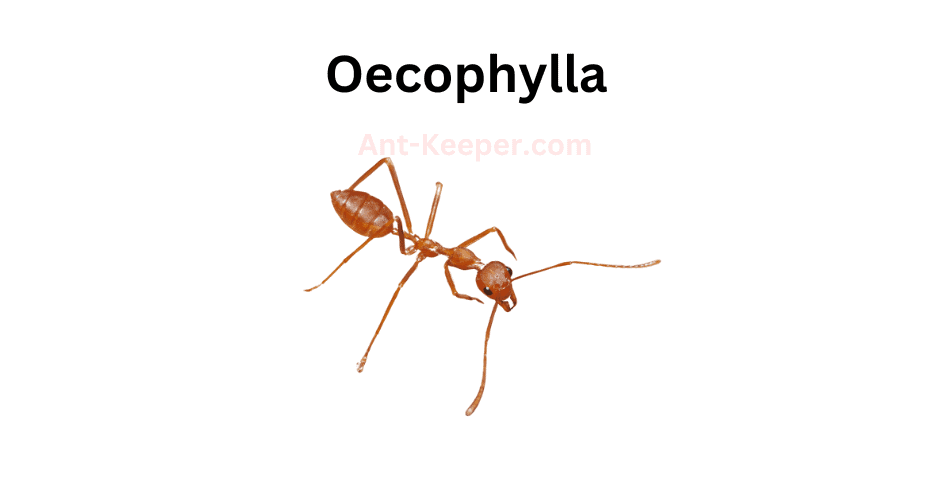
Oecophylla is a genus of ants that belongs to the family Formicidae.
The most well-known species in this genus is Oecophylla smaragdina, commonly known as the weaver ant.
These ants are known for their unique ability to weave leaves together to create nests, which can be found in trees and shrubs.
Oecophylla ants are typically green in color, with long, slender bodies and large mandibles.
They are highly social insects, living in colonies that can contain thousands of individuals.
The colonies are organized into a caste system, with workers responsible for foraging, nest building, and caring for the young, while the queen is responsible for laying eggs.
One of the most interesting aspects of Oecophylla ants is their use in agriculture.
These ants are known to protect certain plants from herbivores, such as caterpillars and beetles, in exchange for a sugary substance produced by the plant.
This mutually beneficial relationship is known as mutualism and is an important example of how different species can work together to survive.
Overall, Oecophylla ants are fascinating creatures that play an important role in their ecosystems.
Their unique nest-building abilities and agricultural partnerships make them a valuable species to study and appreciate.
20) Opisthopsis
Opisthopsisbe is a species of ant belonging to the family Formicidae.
These ants are known for their small size, typically measuring between 1.5 and 2.5 millimeters in length.
They are typically black or dark brown in color, with a shiny exoskeleton.
Opisthopsisbe ants are found in a variety of habitats, including forests, grasslands, and deserts.
They are known for their ability to adapt to different environments, and can be found in both wet and dry climates.
These ants are social insects, living in colonies that can range in size from a few dozen to several thousand individuals.
The colony is typically led by a queen, who is responsible for laying eggs and producing new workers.
Opisthopsisbe ants are omnivorous, feeding on a variety of foods including insects, nectar, and plant sap.
They are also known to scavenge for food, and will often raid the nests of other insects to steal their food.
Despite their small size, Opisthopsisbe ants play an important role in their ecosystem.
They help to control the populations of other insects, and are an important food source for many predators.
21) Paraparatrechina
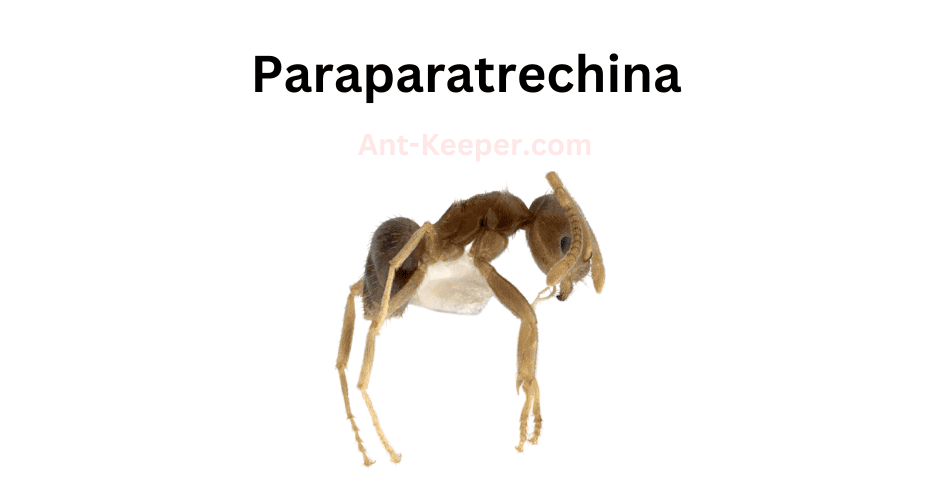
Paraparatrechinabe is a species of ant that belongs to the family Formicidae.
These ants are known for their small size, typically measuring between 1.5 and 2.5 millimeters in length.
They are typically reddish-brown in color and have a slender body shape.
Paraparatrechinabe ants are commonly found in a variety of habitats, including forests, grasslands, and urban areas.
They are known for their aggressive behavior and will defend their nests fiercely against intruders.
These ants are omnivorous, meaning they will eat both plant and animal matter.
They are known to feed on a variety of foods, including nectar, honeydew, and small insects.
Paraparatrechinabe ants are social insects and live in colonies that can range in size from a few dozen to several thousand individuals.
The colony is typically led by a queen ant, who is responsible for laying eggs and maintaining the overall health of the colony.
Overall, Paraparatrechinabe ants are an important part of many ecosystems and play a vital role in maintaining the balance of nature.
Despite their small size, they are a formidable force in the world of insects and are a fascinating species to study and observe.
22) Crazy Ants, Paratrechina

Crazy ants, also known as Nylanderia fulva, are a species of ant that belong to the family Formicidae.
They are small in size, measuring only about 2.2 to 3 mm in length, and are reddish-brown in color.
These ants are known for their erratic and unpredictable behavior, hence the name "crazy ants."
Crazy ants are native to South America, but have since spread to other parts of the world, including North America, Asia, and Australia.
They are highly adaptable and can thrive in a variety of environments, including urban areas, forests, and grasslands.
One of the most notable characteristics of crazy ants is their ability to form large colonies with multiple queens.
This allows them to quickly establish themselves in new areas and outcompete other ant species.
Crazy ants are also known for their aggressive behavior towards other insects and animals, including humans.
In addition to their aggressive behavior, crazy ants are also known for their ability to cause damage to electrical equipment.
They are attracted to electrical currents and can easily short-circuit electronics, causing damage and potentially starting fires.
Despite their small size, crazy ants are a formidable species that can have a significant impact on their environment.
As they continue to spread to new areas, it is important to monitor their behavior and take steps to control their populations in order to minimize their impact on ecosystems and human infrastructure.
23) Parvaponera
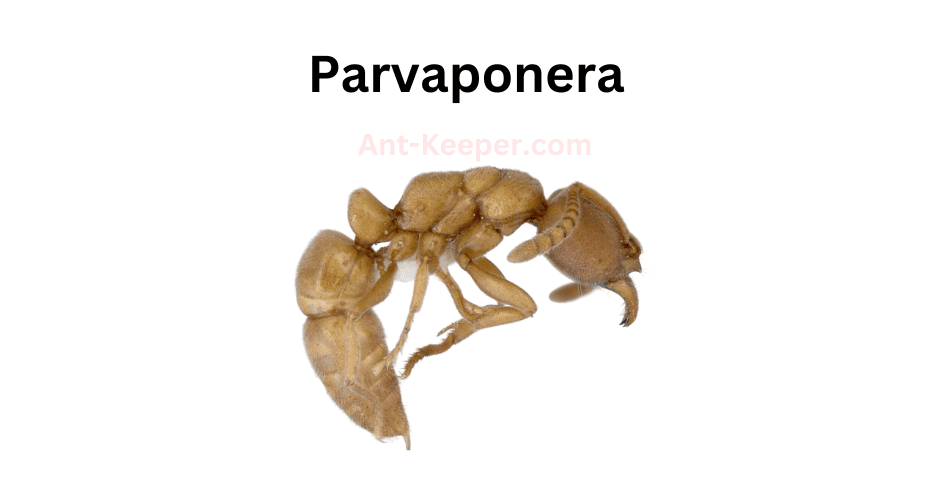
Parvaponerabe is a species of ant that belongs to the family Formicidae.
It is a relatively small ant, with workers measuring around 4-5 millimeters in length.
The ant has a dark brown or black coloration, with a shiny exoskeleton that is covered in fine hairs.
Parvaponerabe ants are known for their aggressive behavior and are often found in large colonies.
They are primarily ground-dwelling ants, but can also be found in trees and other vegetation.
The ants are omnivorous, feeding on a variety of insects, fruits, and seeds.
One unique characteristic of Parvaponerabe ants is their ability to produce formic acid, which they use as a defense mechanism against predators.
When threatened, the ants will release the formic acid from their bodies, which can cause irritation and pain to potential predators.
Parvaponerabe ants are also known for their social behavior, with a clear division of labor among the different members of the colony.
The queen is responsible for laying eggs, while the workers are responsible for foraging, caring for the young, and defending the colony.
Overall, Parvaponerabe ants are an important part of many ecosystems, playing a key role in controlling insect populations and contributing to soil health.
24) Big Headed Ants, Pheidole

Big Headed Ants, also known as Pheidole megacephala, are a species of ant that belong to the family Formicidae.
These ants are known for their distinctive large heads, which are used for defense and communication within their colonies.
Big Headed Ants are typically found in tropical and subtropical regions, where they build their nests in soil, leaf litter, and other organic matter.
They are omnivorous, feeding on a variety of insects, seeds, and other small organisms.
One of the most interesting aspects of Big Headed Ants is their social behavior.
They live in large colonies, with a queen ant at the center of the hierarchy.
The queen is responsible for laying eggs, while the other ants in the colony perform various tasks such as foraging for food, caring for the young, and defending the colony from predators.
Big Headed Ants are also known for their ability to displace other ant species in their habitats.
They are aggressive and have been known to attack and kill other ants, as well as compete with them for resources.
Despite their aggressive behavior, Big Headed Ants are not considered a major pest species.
However, their ability to displace other ant species and their potential impact on native ecosystems make them an important species to study and monitor.
25) Platythyrea
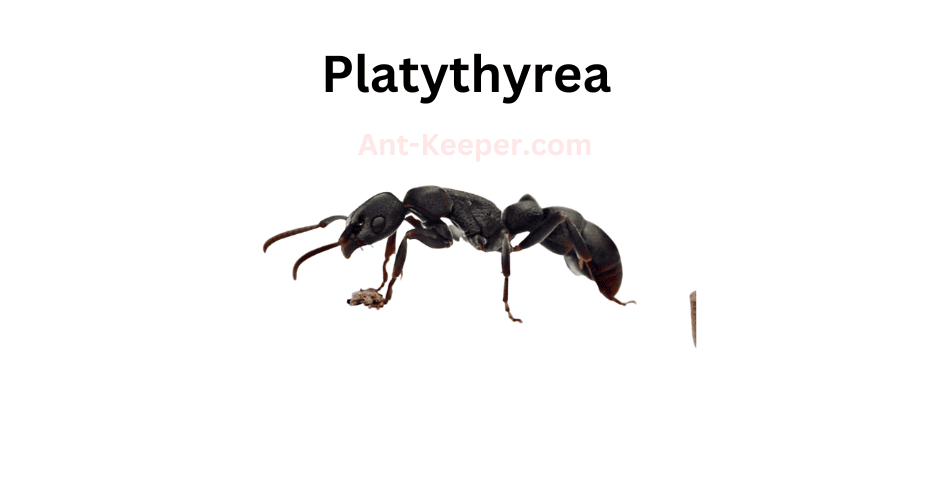
Platythyreabe is a species of ant that belongs to the family Formicidae.
These ants are known for their unique physical characteristics, including their flattened bodies and elongated mandibles.
Platythyreabe ants are typically found in forested areas and are known to be active foragers, often hunting for small insects and other invertebrates.
One of the most interesting aspects of Platythyreabe ants is their social behavior.
These ants live in colonies that are typically composed of several hundred individuals.
Within these colonies, there is a strict hierarchy, with a single queen ant at the top.
The queen is responsible for laying eggs, while the other ants in the colony are responsible for caring for the young and maintaining the nest.
Platythyreabe ants are also known for their aggressive behavior.
When threatened, these ants will use their elongated mandibles to defend themselves and their colony.
They are also known to release a chemical signal that alerts other ants in the colony to the presence of a threat.
Despite their aggressive behavior, Platythyreabe ants play an important role in their ecosystem.
They help to control populations of small insects and other invertebrates, and they also serve as a food source for larger predators.
Overall, Platythyreabe ants are fascinating creatures that offer a unique glimpse into the complex world of social insects.
26) Spiny Ants, Polyrhachis
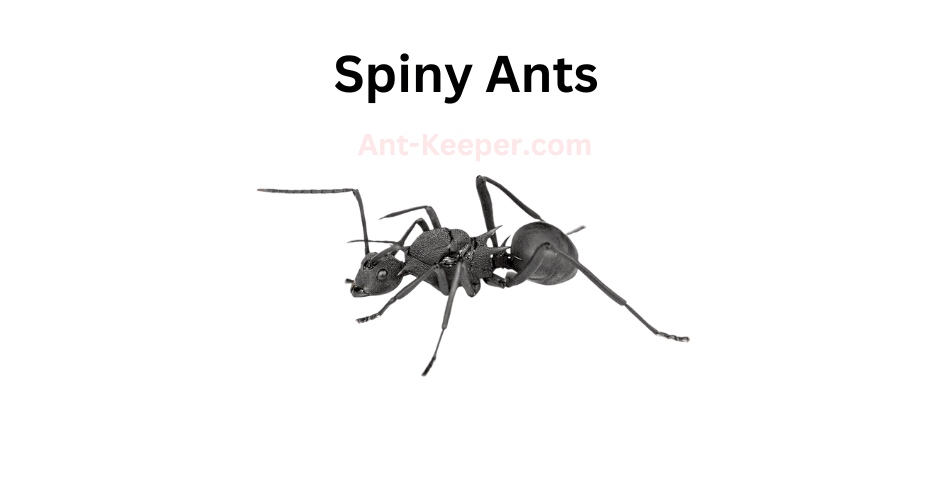
Spiny ants, also known as Polyrhachis sp., are a species of ants that belong to the family Formicidae.
These ants are known for their unique appearance, with spines covering their bodies that serve as a form of protection against predators.
Spiny ants are typically black or dark brown in color and range in size from 4 to 10 millimeters in length.
They are found in a variety of habitats, including forests, grasslands, and urban areas.
These ants are known for their aggressive behavior and will defend their nests fiercely.
Spiny ants are omnivores, feeding on a variety of food sources including insects, nectar, and honeydew.
They are also known to tend to aphids, protecting them from predators in exchange for the sweet honeydew they produce.
These ants are social insects, living in colonies that can range in size from a few dozen to several thousand individuals.
The colony is typically led by a queen ant, who is responsible for laying eggs and maintaining the colony's population.
Spiny ants play an important role in their ecosystems, serving as both predators and prey.
They help to control the populations of other insects and provide food for larger animals such as birds and reptiles.
Overall, spiny ants are a fascinating species of ants that are known for their unique appearance and aggressive behavior.
They play an important role in their ecosystems and are an important part of the natural world.
27) Porthole Ants, Ponera
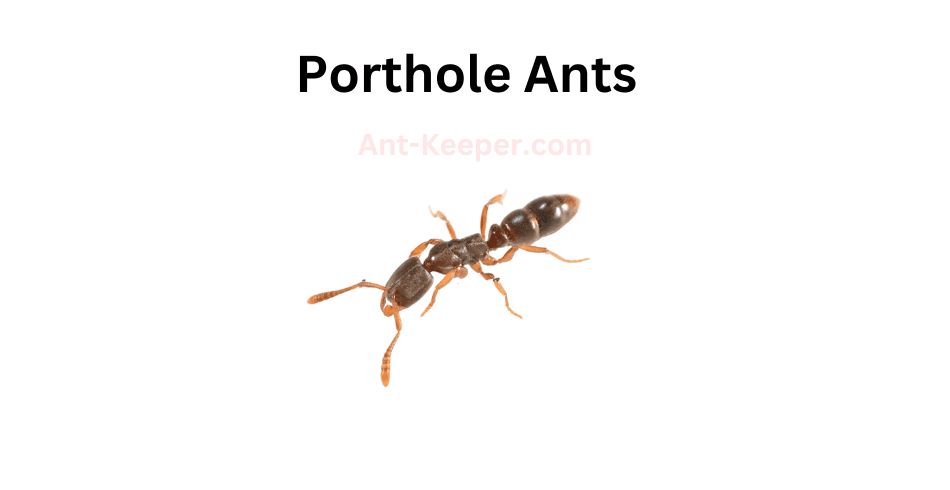
Porthole ants, also known as Temnothorax spp., are a genus of small ants that are commonly found in forested areas.
These ants are known for their unique nesting behavior, as they create their nests in small cavities or "portholes" in trees, rocks, or other natural structures.
Porthole ants are typically less than 5mm in length and have a dark brown or black coloration.
They are social insects and live in colonies that can range from a few dozen to several hundred individuals.
The colonies are typically led by a single queen, who is responsible for laying eggs and maintaining the colony's reproductive population.
One of the most interesting aspects of porthole ants is their nesting behavior.
Unlike many other ant species, porthole ants do not create large underground nests.
Instead, they seek out small cavities in natural structures and use them as their nesting sites.
These cavities can be as small as a few millimeters in diameter and are often located high up in trees or on rocky outcroppings.
Porthole ants are also known for their ability to adapt to changing environmental conditions.
They are able to quickly relocate their nests if their current nesting site becomes unsuitable due to factors such as flooding or predation.
This adaptability allows them to thrive in a variety of habitats, from temperate forests to arid deserts.
Overall, porthole ants are a fascinating and unique species of ant that have adapted to their environment in a variety of ways.
Their nesting behavior and adaptability make them an important species to study for understanding the ecology of forested areas.
28) Pristomyrmex
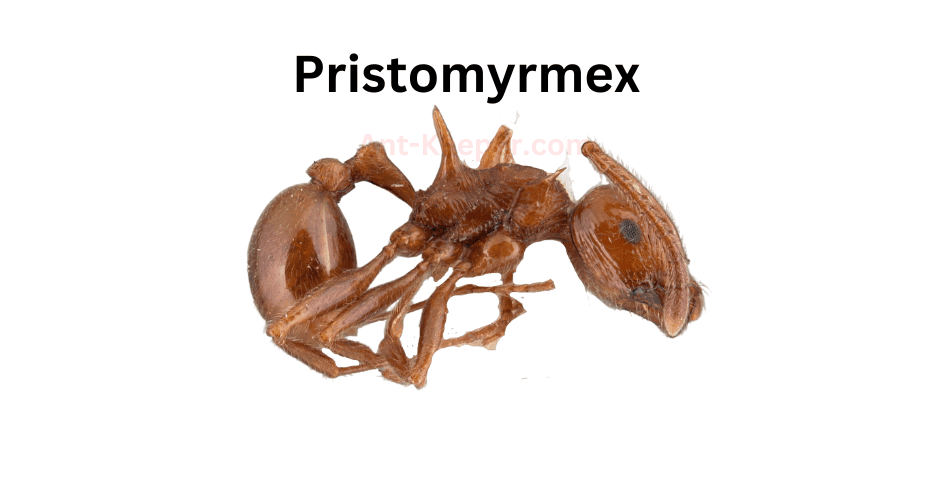
Pristomyrmex is a genus of ants that belongs to the subfamily Myrmicinae.
The ants in this genus are small in size, measuring between 2-4mm in length.
They are known for their distinctive appearance, with a slender and elongated body shape, and a narrow waist that separates the thorax and abdomen.
Pristomyrmex ants are typically found in forested areas, where they nest in soil or leaf litter.
They are known to be aggressive predators, feeding on other insects and small invertebrates.
They are also known to have a mutualistic relationship with certain plant species, where they protect the plants from herbivores in exchange for food and shelter.
One species of Pristomyrmex, Pristomyrmex punctatus, is known for its unique behavior of "playing dead" when threatened.
When disturbed, these ants will curl up their legs and antennae and remain motionless, resembling a dead insect.
This behavior is thought to be a defense mechanism against predators.
Overall, Pristomyrmex ants are an important part of forest ecosystems, playing a role in both predation and mutualism.
Their unique appearance and behavior make them an interesting subject for study and observation.
29) Probolomyrmex
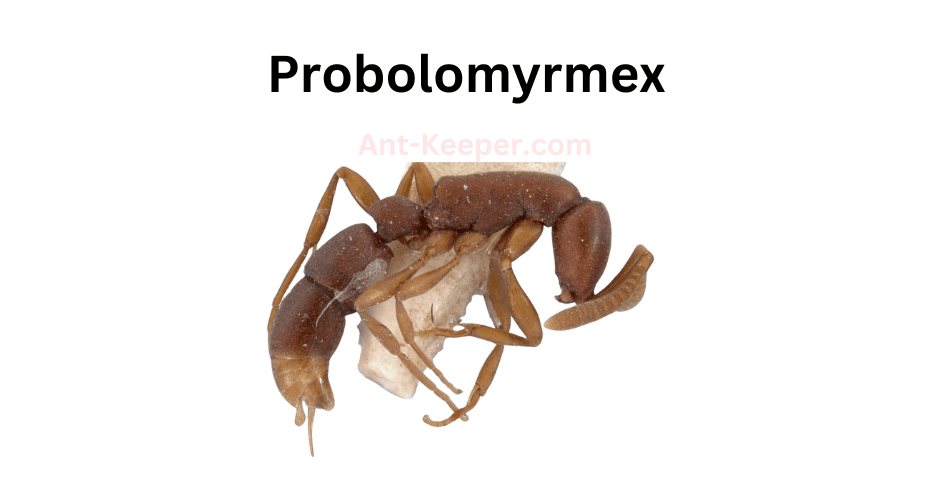
Probolomyrmex is a genus of ants that belongs to the subfamily Proceratiinae.
These ants are known for their unique morphology, which includes a long and slender body, a narrow head, and elongated mandibles.
The genus is characterized by the presence of a distinct petiole, which separates the thorax and the abdomen.
Probolomyrmex ants are typically found in tropical and subtropical regions, where they inhabit a variety of habitats, including forests, grasslands, and deserts.
They are known to be highly aggressive and territorial, often engaging in fierce battles with other ant species.
One of the most interesting aspects of Probolomyrmex ants is their social behavior.
These ants are known to be highly organized, with a well-defined caste system that includes workers, soldiers, and reproductive individuals.
The workers are responsible for foraging, nest maintenance, and caring for the young, while the soldiers defend the colony against predators and other threats.
Despite their small size, Probolomyrmex ants play an important role in their ecosystem.
They are known to be efficient predators, feeding on a variety of insects and other small invertebrates.
They also help to aerate the soil and distribute nutrients, which can have a positive impact on plant growth.
Overall, Probolomyrmex ants are a fascinating and important group of insects that are worthy of further study and conservation efforts.
30) Pseudoponera
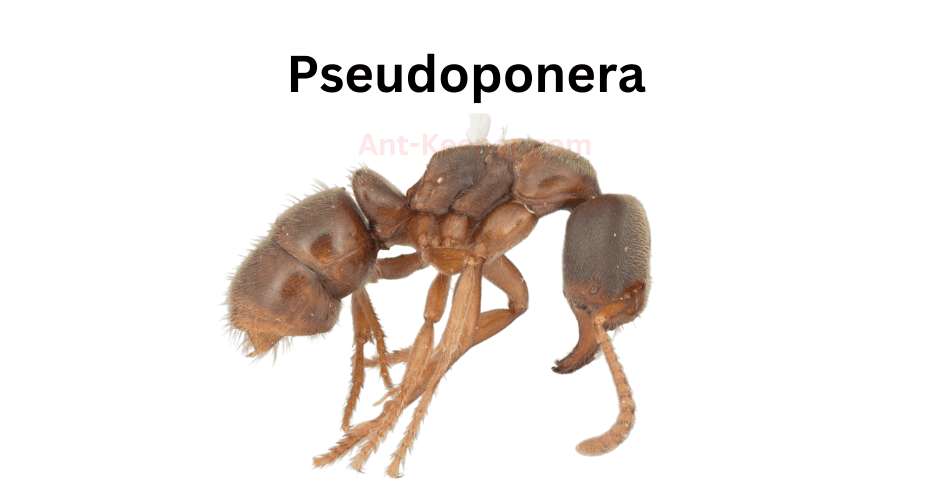
Pseudoponerabe is a species of ant that belongs to the family Formicidae.
These ants are known for their unique physical characteristics and behavior.
They are small in size, measuring only a few millimeters in length, and have a dark brown or black coloration.
One of the most distinctive features of Pseudoponerabe ants is their elongated mandibles.
These mandibles are used for a variety of tasks, including hunting, defense, and nest building.
The ants are also known for their aggressive behavior, and will not hesitate to attack other insects or animals that they perceive as a threat.
Pseudoponerabe ants are typically found in forested areas, where they build their nests in the soil or in decaying wood.
They are omnivorous, feeding on a variety of insects, fruits, and seeds.
The ants are also known to engage in trophallaxis, a behavior in which they exchange food with other members of their colony.
Like many other ant species, Pseudoponerabe ants have a complex social structure.
They live in colonies that can contain thousands of individuals, with each ant having a specific role to play in the colony's survival.
The queen ant is responsible for laying eggs, while the worker ants are responsible for foraging, nest building, and caring for the young.
Overall, Pseudoponerabe ants are fascinating creatures that play an important role in their ecosystem.
Their unique physical characteristics and behavior make them a fascinating subject for study, and their presence in forested areas helps to maintain the delicate balance of nature.
31) Ponerine Ants, Pseudoponera
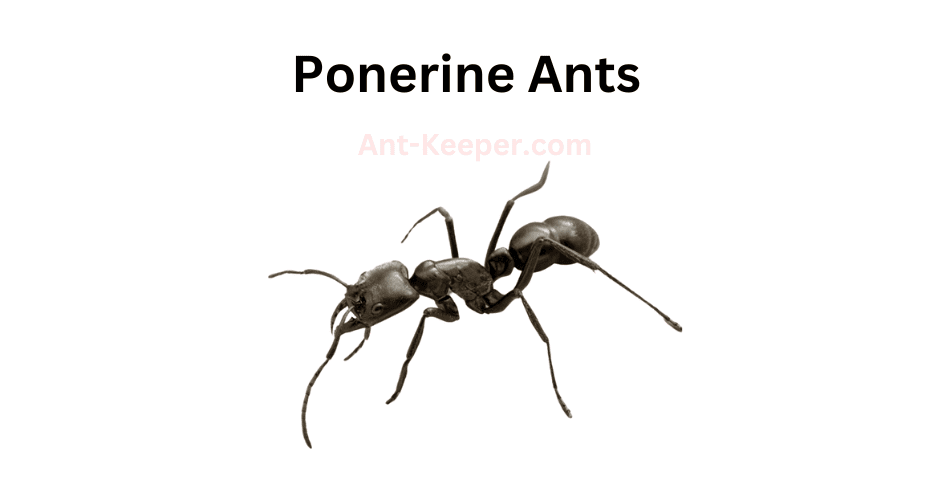
Ponerine ants are a diverse group of ants belonging to the subfamily Ponerinae.
They are found in various habitats, including forests, grasslands, and deserts, and are known for their aggressive behavior and powerful stings.
Ponerine ants are typically medium to large in size, with workers ranging from 3 to 15 millimeters in length.
They have a distinctive appearance, with elongated bodies and long, curved mandibles that they use to capture prey and defend their colonies.
These ants are solitary hunters, and their diet consists mainly of other insects, spiders, and small invertebrates.
They are also known to scavenge on carrion and plant nectar.
Ponerine ants are highly territorial and will aggressively defend their nests against intruders.
They are known for their painful stings, which can cause swelling and discomfort in humans.
Despite their aggressive behavior, ponerine ants play an important role in their ecosystems.
They help to control populations of other insects and contribute to soil health through their nest-building activities.
Overall, ponerine ants are a fascinating and important group of ants that play a vital role in many ecosystems around the world.
32) Sphinctomyrmex
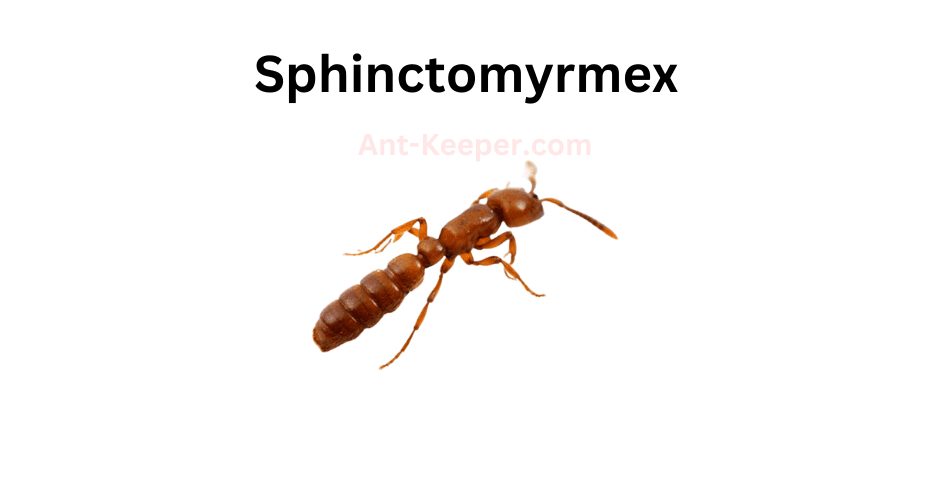
Sphinctomyrmex is a genus of ants that belongs to the subfamily Myrmicinae.
These ants are known for their unique morphology, which includes a distinct constriction between the thorax and abdomen, giving them their common name of "waist ants."
Sphinctomyrmex ants are relatively small, with workers measuring between 2-5mm in length.
They are typically reddish-brown in color, with a shiny exoskeleton.
These ants are known for their aggressive behavior, and will readily defend their nests against intruders.
One of the most interesting aspects of Sphinctomyrmex ants is their reproductive strategy.
Unlike many other ant species, Sphinctomyrmex queens do not mate with multiple males.
Instead, they mate with a single male and store his sperm in a specialized organ called the spermatheca.
This allows the queen to produce offspring with a high degree of relatedness, which may confer certain advantages in terms of colony cohesion and cooperation.
Sphinctomyrmex ants are found in a variety of habitats, including forests, grasslands, and deserts.
They are known to forage on the ground and in the understory, and will feed on a variety of food sources, including insects, nectar, and honeydew.
Overall, Sphinctomyrmex ants are a fascinating group of insects that exhibit a number of unique traits and behaviors.
Their distinctive morphology, aggressive behavior, and unusual reproductive strategy make them a subject of interest for researchers and ant enthusiasts alike.
33) Vampire Ants, Stigmatomma
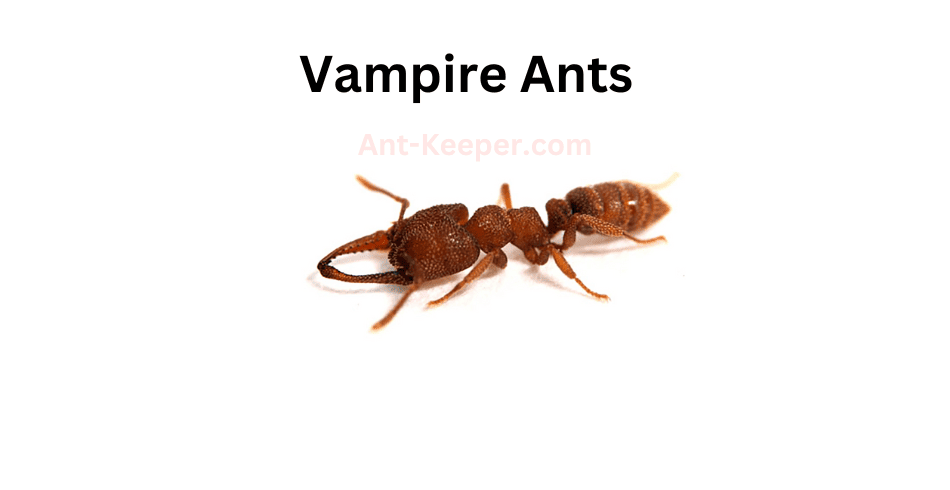
Vampire ants, also known as blood-sucking ants, are a species of ants that feed on the blood of other insects.
These ants are known for their unique feeding behavior, which involves biting into the exoskeleton of their prey and then sucking out their blood.
Vampire ants are typically found in tropical and subtropical regions, where they live in colonies of up to several thousand individuals.
They are known for their aggressive behavior and will attack other insects, including larger prey such as grasshoppers and caterpillars.
One of the most interesting aspects of vampire ants is their ability to adapt to their environment.
In some cases, these ants have been known to feed on the blood of their own colony members when other sources of food are scarce.
Vampire ants are also known for their unique physical characteristics.
They have long, curved mandibles that are used to bite into the exoskeleton of their prey.
They also have specialized mouthparts that allow them to suck out the blood of their victims.
Despite their aggressive behavior and blood-sucking tendencies, vampire ants play an important role in their ecosystem.
They help to control the populations of other insects and contribute to the overall balance of their environment.
Overall, vampire ants are a fascinating species of ants that have adapted to their environment in unique and interesting ways.
Their behavior and physical characteristics make them a subject of interest for scientists and nature enthusiasts alike.
34) Miniature Trap-Jaw Ants, Strumigenys
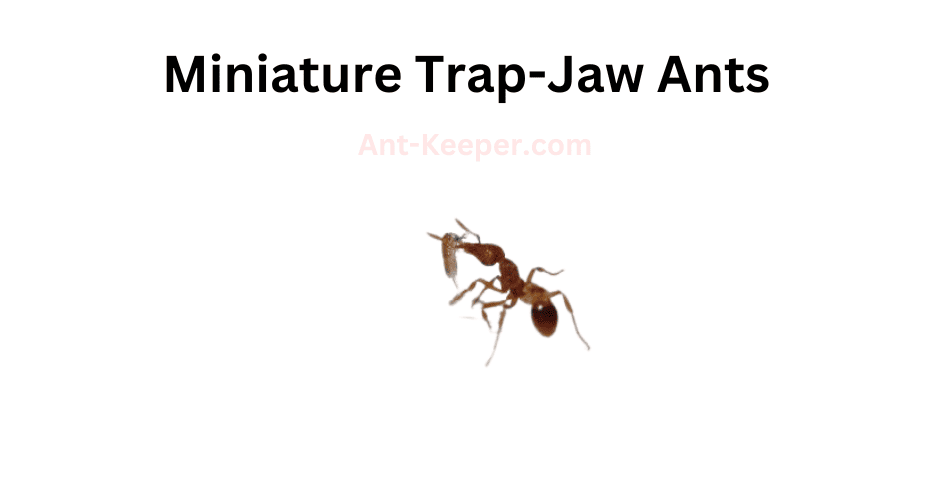
The Miniature Trap-Jaw Ants, scientifically known as Odontomachus sp., are a species of ants that belong to the family Formicidae.
These ants are known for their unique and powerful mandibles, which they use to capture prey and defend their colonies.
The Miniature Trap-Jaw Ants are relatively small in size, measuring only a few millimeters in length.
They have a dark brown or black coloration and a slender body shape.
Their most distinctive feature is their mandibles, which are elongated and can snap shut with incredible force.
These mandibles are used to capture prey, crush seeds, and defend the colony against predators.
The Miniature Trap-Jaw Ants are found in a variety of habitats, including forests, grasslands, and deserts.
They are known to be active during the day and are often seen foraging for food.
These ants are omnivorous and feed on a variety of food sources, including insects, nectar, and seeds.
The Miniature Trap-Jaw Ants are social insects and live in colonies that can range in size from a few dozen to several thousand individuals.
The colony is typically led by a queen, who is responsible for laying eggs and maintaining the colony's population.
The workers are responsible for foraging, caring for the young, and defending the colony.
Overall, the Miniature Trap-Jaw Ants are fascinating insects that have evolved unique adaptations to survive in their environment.
Their powerful mandibles and social behavior make them an important part of many ecosystems.
35) Syllophopsis
Syllophopsisbe is a species of ant that belongs to the family Formicidae.
These ants are known for their small size, measuring only about 2-3 millimeters in length.
They have a dark brown or black coloration and a slender body shape.
Syllophopsisbe ants are typically found in forested areas, where they build their nests in soil or leaf litter.
They are known to be arboreal, meaning they are capable of climbing trees and foraging for food in the canopy.
These ants are omnivorous, feeding on a variety of food sources including insects, nectar, and plant sap.
They are also known to engage in trophallaxis, a behavior where they exchange food and other substances with other members of their colony.
Syllophopsisbe ants are social insects, living in colonies that can range in size from a few dozen to several hundred individuals.
They have a hierarchical social structure, with a queen ant at the top and various worker ants performing different tasks such as foraging, nest building, and caring for the young.
Overall, Syllophopsisbe ants play an important role in forest ecosystems, contributing to nutrient cycling and serving as a food source for other animals.
36) Tapinoma

Tapinoma is a genus of ants that belongs to the family Formicidae.
The species Tapinoma is a small ant that measures about 2-3 mm in length.
They are commonly found in urban and suburban areas, and are known to invade homes and buildings in search of food and shelter.
Tapinoma ants are light brown in color and have a slender body with long legs.
They have a distinctively shaped head that is wider than their thorax, and they possess a pair of antennae that are bent at a right angle.
These ants are known for their ability to form large colonies, which can consist of thousands of individuals.
Tapinoma ants are omnivorous and feed on a variety of food sources, including insects, nectar, and honeydew.
They are also known to scavenge for food in garbage cans and other waste areas.
These ants are attracted to sweet and sugary substances, and will often invade kitchens and pantries in search of food.
Tapinoma ants are not known to be aggressive towards humans, but they can become a nuisance when they invade homes and buildings.
They are known to build their nests in wall voids, under floors, and in other hidden areas.
If left unchecked, these ants can cause damage to structures and can contaminate food sources.
Overall, Tapinoma ants are a common pest in many parts of the world.
While they are not harmful to humans, they can be a nuisance when they invade homes and buildings.
Proper pest control measures can help to prevent infestations and keep these ants at bay.
37) Pavement Ants, Tetramorium
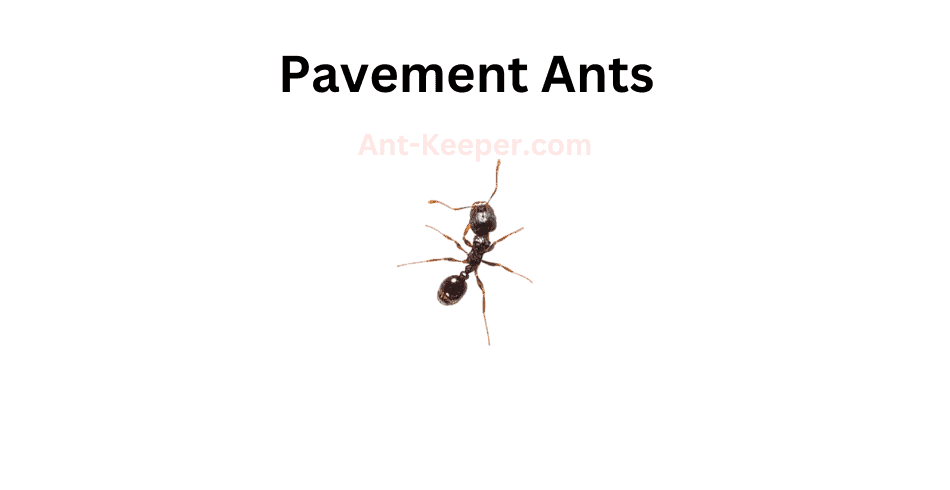
Pavement ants, also known as Tetramorium caespitum, are a species of ant that belong to the family Formicidae.
These ants are commonly found in urban and suburban areas, where they build their nests in cracks and crevices in pavement, sidewalks, and buildings.
Pavement ants are small in size, measuring between 2.5 to 4 mm in length.
They are typically dark brown or black in color, with lighter colored legs and antennae.
These ants are known for their aggressive behavior and will defend their nests fiercely against intruders.
Pavement ants are omnivorous, feeding on a variety of foods including insects, seeds, and sweet substances such as honeydew and nectar.
They are also known to scavenge for food in garbage cans and other waste areas.
Pavement ants are social insects, living in colonies that can range in size from a few hundred to several thousand individuals.
The colony is typically led by a queen ant, who is responsible for laying eggs and maintaining the colony.
Pavement ants are considered a nuisance pest, as they can invade homes and buildings in search of food and shelter.
They are also known to cause damage to pavement and other structures by excavating soil and creating tunnels.
Overall, pavement ants are a common and adaptable species of ant that play an important role in urban ecosystems.
While they may be a nuisance to humans, they are an important food source for many other animals and help to maintain the balance of the ecosystem.
38) Old World Slender Ants, Tetraponera
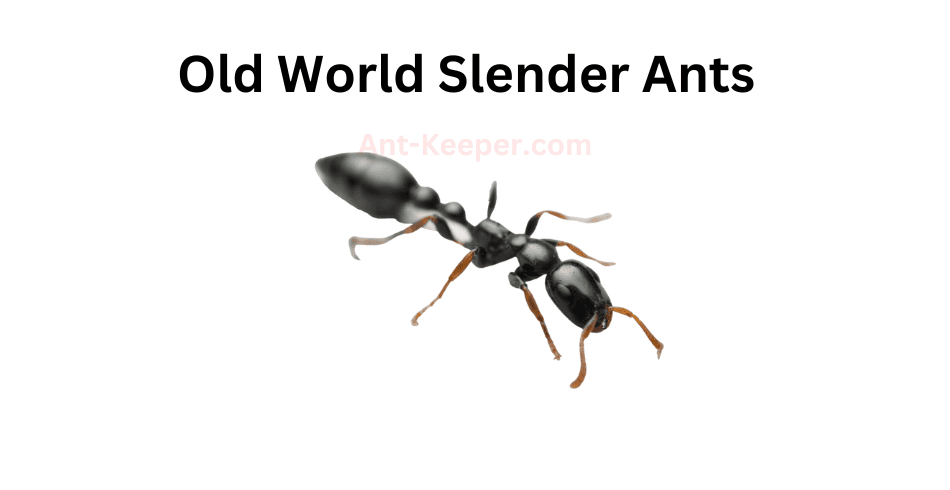
The Old World Slender Ants are a group of ants belonging to the genus Leptomyrmex.
They are found in various regions of the world, including Asia, Africa, and Australia.
These ants are known for their slender and elongated bodies, which are typically brown or black in color.
Old World Slender Ants are social insects that live in colonies.
The colonies are typically small, with only a few hundred individuals.
The ants are highly organized and have a strict hierarchy, with a queen at the top and workers and soldiers below her.
The diet of Old World Slender Ants consists mainly of insects and other small invertebrates.
They are also known to feed on nectar and honeydew produced by aphids and other insects.
Old World Slender Ants are known for their aggressive behavior and are capable of inflicting painful stings.
They are also known to defend their colonies fiercely against intruders.
Overall, the Old World Slender Ants are an interesting and important group of ants that play an important role in their ecosystems.
Their unique physical characteristics and social behavior make them a fascinating subject for scientific study.
39) Rover Ants, Brachymyrmex Obscurior
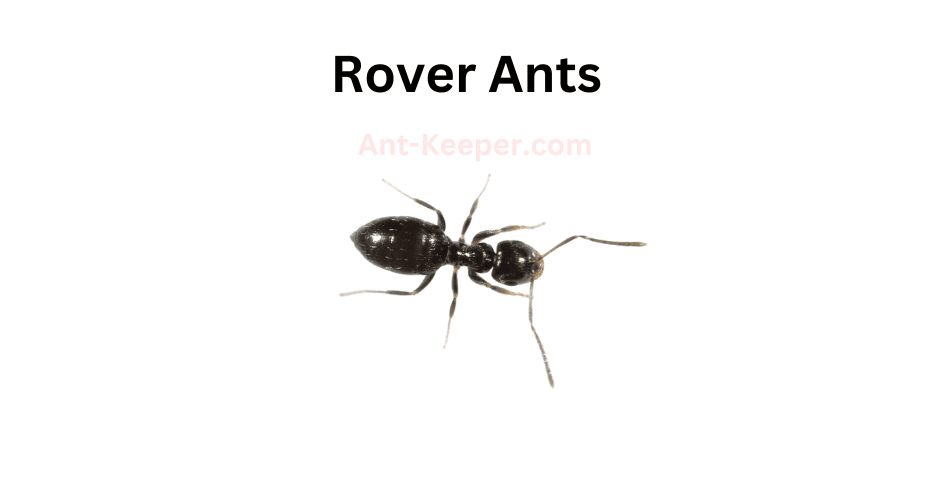
Rover ants, also known as Brachymyrmex spp., are a species of small, dark-colored ants that are commonly found in urban and suburban areas.
These ants are known for their ability to quickly move their nests from one location to another, hence their name "rover ants."
Rover ants are typically between 1.5 and 2.5 millimeters in length and have a dark brown or black coloration.
They have a slender body with a distinct waist and long, thin legs.
These ants are known for their aggressive behavior towards other ant species and will often invade and take over their nests.
Rover ants are omnivorous and will feed on a variety of food sources, including insects, sweets, and plant material.
They are also known to be attracted to human food and can become a nuisance in homes and other buildings.
One unique characteristic of rover ants is their ability to form "supercolonies." These supercolonies can consist of multiple nests and can span large areas.
This behavior allows rover ants to quickly adapt to changing environments and find new food sources.
Overall, rover ants are a common and adaptable species that can be found in many different environments.
While they can be a nuisance in homes and other buildings, they play an important role in the ecosystem as scavengers and predators of other insects.
40) Urban Alate Ants, Hypoponera Punctatissima
The Urban Alate Ants are a species of ants that are commonly found in urban areas.
They are known for their ability to fly and are often seen swarming around streetlights and other sources of light at night.
These ants are part of the Formicidae family and are classified as alates, which means they have wings and are capable of reproducing.
The Urban Alate Ants are typically small in size, measuring between 2-3mm in length.
They have a dark brown or black coloration and a slender body shape.
These ants are social insects and live in large colonies that can consist of thousands of individuals.
The diet of the Urban Alate Ants consists of a variety of food sources, including nectar, honeydew, and other sugary substances.
They are also known to feed on insects and other small invertebrates.
One of the most interesting aspects of the Urban Alate Ants is their reproductive behavior.
The alates, or winged ants, are the reproductive members of the colony.
During the mating season, the alates will swarm in large numbers and mate in mid-air.
After mating, the males will die, and the females will shed their wings and search for a suitable location to start a new colony.
Overall, the Urban Alate Ants are a fascinating species of ants that have adapted well to living in urban environments.
Their ability to fly and reproduce in large numbers makes them a common sight in many cities around the world.
41) Flower Ants, Monomorium Floricola
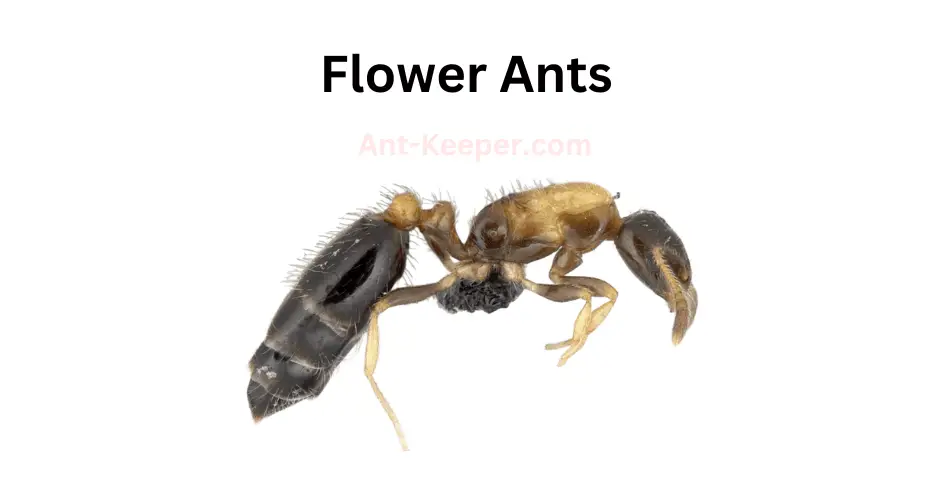
The Flower Ant, also known as the Camponotus consobrinus, is a species of ant that belongs to the Camponotus genus.
These ants are commonly found in various habitats, including forests, grasslands, and gardens.
They are known for their unique behavior of collecting nectar and pollen from flowers, hence their name.
The Flower Ants are relatively large, with workers measuring up to 12mm in length.
They have a black or dark brown body with reddish-brown legs and antennae.
The queen ants are even larger, measuring up to 18mm in length.
These ants are known for their strong mandibles, which they use to cut through plant material and defend their colony.
The Flower Ants are social insects that live in colonies consisting of a queen, workers, and males.
The queen is responsible for laying eggs, while the workers take care of the young and forage for food.
The males are responsible for mating with the queen.
One of the unique characteristics of the Flower Ants is their relationship with plants.
They are known to collect nectar and pollen from flowers, which they use as a source of food.
In return, they help pollinate the flowers, which is essential for the plants' reproduction.
The Flower Ants are also known for their aggressive behavior towards other ant species.
They will defend their territory and resources fiercely, often engaging in battles with other ant colonies.
In conclusion, the Flower Ants are a fascinating species of ant that have a unique relationship with plants.
They play an important role in pollination and are essential for the ecosystem.
Their aggressive behavior towards other ant species also highlights their importance in maintaining the balance of the ecosystem.
42) Pharaoh Ants, Monomorium Pharaonis
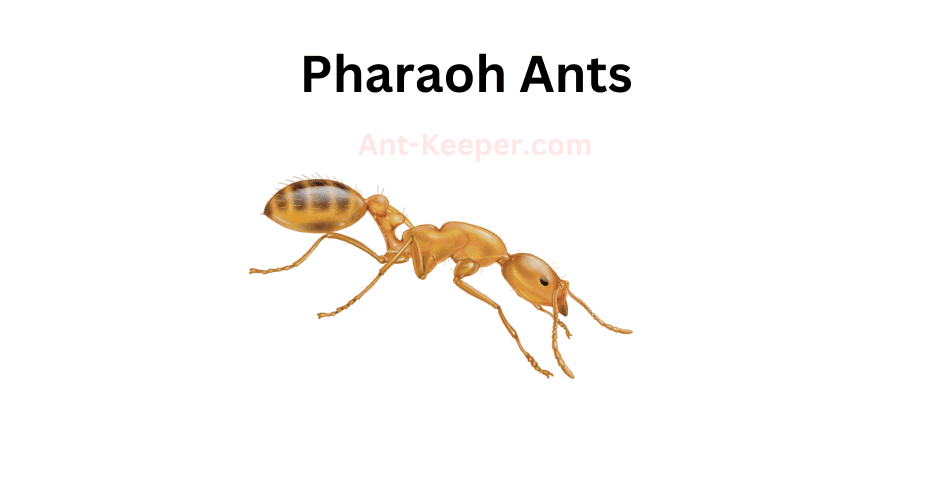
Pharaoh ants, scientifically known as Monomorium pharaonis, are small, yellowish-brown ants that measure about 2 mm in length.
They are commonly found in indoor environments such as homes, hospitals, and commercial buildings.
Pharaoh ants are known for their ability to form large colonies with multiple queens.
These colonies can contain thousands of workers and can quickly infest a building.
They are also known for their ability to adapt to changing environments and can easily relocate their nests if disturbed.
Pharaoh ants are omnivorous and feed on a variety of foods including sweets, meats, and other insects.
They are also known to feed on human fluids such as blood and wound exudates.
Due to their small size and ability to hide in small crevices, pharaoh ants can be difficult to control.
They are known to be resistant to many common insecticides and can quickly rebound after treatment.
Pharaoh ants are also a concern in healthcare settings as they can transmit diseases such as salmonella and staphylococcus.
They can also contaminate sterile equipment and supplies.
Overall, pharaoh ants are a common pest in indoor environments and can be difficult to control.
It is important to seek professional pest control services to effectively manage infestations.
43) Crazy Ants, Nylanderia Bourbonica

Crazy ants, also known as Nylanderia fulva, are a species of ant that belong to the family Formicidae.
They are small in size, measuring only about 2.2 to 3 mm in length, and are reddish-brown in color.
These ants are known for their erratic and unpredictable behavior, hence the name "crazy ants."
Crazy ants are native to South America, but have since spread to other parts of the world, including North America, Asia, and Australia.
They are highly adaptable and can thrive in a variety of environments, including urban areas, forests, and grasslands.
One of the most notable characteristics of crazy ants is their ability to form large colonies with multiple queens.
This allows them to quickly establish themselves in new areas and outcompete other ant species.
Crazy ants are also known for their aggressive behavior towards other insects and animals, including humans.
In addition to their aggressive behavior, crazy ants are also known for their ability to cause damage to electrical equipment.
They are attracted to electrical currents and can easily short-circuit electronics, causing damage and potentially starting fires.
Despite their small size, crazy ants are a formidable species that can have a significant impact on their environment.
As they continue to spread to new areas, it is important to monitor their behavior and take steps to control their populations in order to minimize their impact on ecosystems and human infrastructure.
44) Crazy Ants, Nylanderia Vividula

Crazy ants, also known as Nylanderia fulva, are a species of ant that belong to the family Formicidae.
They are small in size, measuring only about 2.2 to 3 mm in length, and are reddish-brown in color.
These ants are known for their erratic and unpredictable behavior, hence the name "crazy ants."
Crazy ants are native to South America, but have since spread to other parts of the world, including North America, Asia, and Australia.
They are highly adaptable and can thrive in a variety of environments, including urban areas, forests, and grasslands.
One of the most notable characteristics of crazy ants is their ability to form large colonies with multiple queens.
This allows them to quickly establish themselves in new areas and outcompete other ant species.
Crazy ants are also known for their aggressive behavior towards other insects and animals, including humans.
In addition to their aggressive behavior, crazy ants are also known for their ability to cause damage to electrical equipment.
They are attracted to electrical currents and can easily short-circuit electronics, causing damage and potentially starting fires.
Despite their small size, crazy ants are a formidable species that can have a significant impact on their environment.
As they continue to spread to new areas, it is important to monitor their behavior and take steps to control their populations in order to minimize their impact on ecosystems and human infrastructure.
45) Longhorn Crazy Ants, Paratrechina Longicornis
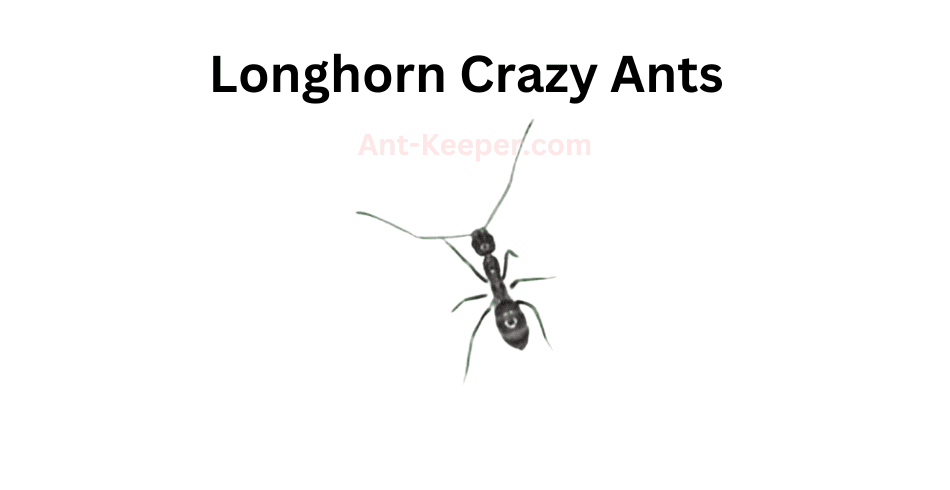
The Longhorn Crazy Ant (Paratrechina longicornis) is a small, dark brown ant species that is known for its erratic and unpredictable behavior.
These ants are typically found in warm, humid environments and are often found in urban areas, where they can be a nuisance to homeowners and businesses.
One of the most distinctive features of the Longhorn Crazy Ant is its long, slender antennae, which can be up to twice the length of its body.
These antennae are used to detect chemical signals from other ants and to navigate through their environment.
Longhorn Crazy Ants are omnivorous and will feed on a wide variety of foods, including insects, fruits, and sweet liquids.
They are also known to be scavengers, and will often invade other ant colonies to steal food and resources.
One of the most interesting aspects of the Longhorn Crazy Ant is its behavior.
These ants are known for their erratic movements and unpredictable behavior, which can make them difficult to control.
They are also known for their ability to form large, sprawling colonies that can quickly take over an area.
Despite their small size, Longhorn Crazy Ants can be a significant pest problem, particularly in urban areas.
They can invade homes and businesses, contaminate food, and cause damage to electrical equipment.
As a result, it is important to take steps to control these ants and prevent infestations from occurring.
46) Big Headed Ants, Pheidole Megacephala

Big Headed Ants, also known as Pheidole megacephala, are a species of ant that belong to the family Formicidae.
These ants are known for their distinctive large heads, which are used for defense and communication within their colonies.
Big Headed Ants are typically found in tropical and subtropical regions, where they build their nests in soil, leaf litter, and other organic matter.
They are omnivorous, feeding on a variety of insects, seeds, and other small organisms.
One of the most interesting aspects of Big Headed Ants is their social behavior.
They live in large colonies, with a queen ant at the center of the hierarchy.
The queen is responsible for laying eggs, while the other ants in the colony perform various tasks such as foraging for food, caring for the young, and defending the colony from predators.
Big Headed Ants are also known for their ability to displace other ant species in their habitats.
They are aggressive and have been known to attack and kill other ants, as well as compete with them for resources.
Despite their aggressive behavior, Big Headed Ants are not considered a major pest species.
However, their ability to displace other ant species and their potential impact on native ecosystems make them an important species to study and monitor.
47) Pan-Tropical Panther Ants, Pseudoponera Stigma
The Pan-Tropical Panther Ants, also known as Paraponera clavata, are a species of large, solitary ants found throughout tropical regions around the world.
These ants are known for their painful sting, which has been described as one of the most intense insect stings experienced by humans.
Pan-Tropical Panther Ants are typically found in forested areas, where they build their nests in trees or on the ground.
They are known for their large size, with workers measuring up to 2.5 cm in length.
These ants are also distinctive for their dark brown or black coloration and their long, curved mandibles.
Pan-Tropical Panther Ants are omnivorous, feeding on a variety of insects, fruits, and nectar.
They are also known to hunt larger prey, such as spiders and caterpillars.
These ants are solitary hunters, with each individual foraging and hunting on its own.
One of the most notable features of Pan-Tropical Panther Ants is their painful sting.
The venom of these ants contains a potent toxin called poneratoxin, which causes intense pain, swelling, and redness at the site of the sting.
In some cases, the sting can also cause nausea, vomiting, and fever.
Despite their painful sting, Pan-Tropical Panther Ants are not considered a significant threat to humans.
These ants are generally non-aggressive and will only sting if provoked or threatened.
However, their painful sting has earned them a reputation as one of the most fearsome insects in the tropical regions where they are found.
48) Miniature Trap-Jaw Ants, Strumigenys Emmae

The Miniature Trap-Jaw Ants, scientifically known as Odontomachus sp., are a species of ants that belong to the family Formicidae.
These ants are known for their unique and powerful mandibles, which they use to capture prey and defend their colonies.
The Miniature Trap-Jaw Ants are relatively small in size, measuring only a few millimeters in length.
They have a dark brown or black coloration and a slender body shape.
Their most distinctive feature is their mandibles, which are elongated and can snap shut with incredible force.
These mandibles are used to capture prey, crush seeds, and defend the colony against predators.
The Miniature Trap-Jaw Ants are found in a variety of habitats, including forests, grasslands, and deserts.
They are known to be active during the day and are often seen foraging for food.
These ants are omnivorous and feed on a variety of food sources, including insects, nectar, and seeds.
The Miniature Trap-Jaw Ants are social insects and live in colonies that can range in size from a few dozen to several thousand individuals.
The colony is typically led by a queen, who is responsible for laying eggs and maintaining the colony's population.
The workers are responsible for foraging, caring for the young, and defending the colony.
Overall, the Miniature Trap-Jaw Ants are fascinating insects that have evolved unique adaptations to survive in their environment.
Their powerful mandibles and social behavior make them an important part of many ecosystems.
49) Miniature Trap-Jaw Ants, Strumigenys Godeffroyi

The Miniature Trap-Jaw Ants, scientifically known as Odontomachus sp., are a species of ants that belong to the family Formicidae.
These ants are known for their unique and powerful mandibles, which they use to capture prey and defend their colonies.
The Miniature Trap-Jaw Ants are relatively small in size, measuring only a few millimeters in length.
They have a dark brown or black coloration and a slender body shape.
Their most distinctive feature is their mandibles, which are elongated and can snap shut with incredible force.
These mandibles are used to capture prey, crush seeds, and defend the colony against predators.
The Miniature Trap-Jaw Ants are found in a variety of habitats, including forests, grasslands, and deserts.
They are known to be active during the day and are often seen foraging for food.
These ants are omnivorous and feed on a variety of food sources, including insects, nectar, and seeds.
The Miniature Trap-Jaw Ants are social insects and live in colonies that can range in size from a few dozen to several thousand individuals.
The colony is typically led by a queen, who is responsible for laying eggs and maintaining the colony's population.
The workers are responsible for foraging, caring for the young, and defending the colony.
Overall, the Miniature Trap-Jaw Ants are fascinating insects that have evolved unique adaptations to survive in their environment.
Their powerful mandibles and social behavior make them an important part of many ecosystems.
50) Miniature Trap-Jaw Ants, Strumigenys Membranifera

The Miniature Trap-Jaw Ants, scientifically known as Odontomachus sp., are a species of ants that belong to the family Formicidae.
These ants are known for their unique and powerful mandibles, which they use to capture prey and defend their colonies.
The Miniature Trap-Jaw Ants are relatively small in size, measuring only a few millimeters in length.
They have a dark brown or black coloration and a slender body shape.
Their most distinctive feature is their mandibles, which are elongated and can snap shut with incredible force.
These mandibles are used to capture prey, crush seeds, and defend the colony against predators.
The Miniature Trap-Jaw Ants are found in a variety of habitats, including forests, grasslands, and deserts.
They are known to be active during the day and are often seen foraging for food.
These ants are omnivorous and feed on a variety of food sources, including insects, nectar, and seeds.
The Miniature Trap-Jaw Ants are social insects and live in colonies that can range in size from a few dozen to several thousand individuals.
The colony is typically led by a queen, who is responsible for laying eggs and maintaining the colony's population.
The workers are responsible for foraging, caring for the young, and defending the colony.
Overall, the Miniature Trap-Jaw Ants are fascinating insects that have evolved unique adaptations to survive in their environment.
Their powerful mandibles and social behavior make them an important part of many ecosystems.
51) Ghost Ants, Tapinoma Melanocephalum
Ghost ants, also known as tapinoma melanocephalum, are a species of small, pale-colored ants that are commonly found in tropical and subtropical regions around the world.
These ants are known for their elusive behavior and their ability to quickly disappear when disturbed, earning them their ghostly name.
Ghost ants are typically only about 1.5 to 2 millimeters in length, making them one of the smallest ant species.
They have a pale yellow or white body with a dark head and thorax, which gives them a distinctive appearance.
Ghost ants are also known for their ability to quickly move and navigate through narrow spaces, making them difficult to control in indoor environments.
Ghost ants are omnivorous and will feed on a variety of food sources, including sweets, meats, and fats.
They are also known to feed on other insects and their larvae.
Ghost ants are social insects and live in large colonies, with a single queen ant responsible for laying eggs and producing new workers.
One of the biggest challenges with controlling ghost ants is their ability to quickly adapt to changes in their environment.
They are known to quickly relocate their nests when disturbed, making it difficult to locate and eliminate the colony.
Additionally, ghost ants are resistant to many common insecticides, making it important to use targeted control methods.
Overall, ghost ants are a fascinating and elusive species of ant that can be difficult to control in indoor environments.
Understanding their behavior and biology is key to effectively managing infestations and preventing future problems.
52) Pavement Ants, Tetramorium Insolens

Pavement ants, also known as Tetramorium caespitum, are a species of ant that belong to the family Formicidae.
These ants are commonly found in urban and suburban areas, where they build their nests in cracks and crevices in pavement, sidewalks, and buildings.
Pavement ants are small in size, measuring between 2.5 to 4 mm in length.
They are typically dark brown or black in color, with lighter colored legs and antennae.
These ants are known for their aggressive behavior and will defend their nests fiercely against intruders.
Pavement ants are omnivorous, feeding on a variety of foods including insects, seeds, and sweet substances such as honeydew and nectar.
They are also known to scavenge for food in garbage cans and other waste areas.
Pavement ants are social insects, living in colonies that can range in size from a few hundred to several thousand individuals.
The colony is typically led by a queen ant, who is responsible for laying eggs and maintaining the colony.
Pavement ants are considered a nuisance pest, as they can invade homes and buildings in search of food and shelter.
They are also known to cause damage to pavement and other structures by excavating soil and creating tunnels.
Overall, pavement ants are a common and adaptable species of ant that play an important role in urban ecosystems.
While they may be a nuisance to humans, they are an important food source for many other animals and help to maintain the balance of the ecosystem.
53) Groove-Headed Fierce Ants, Tetramorium Simillimum
Groove-Headed Fierce Ants, also known as GFA, are a species of ants that belong to the Formicidae family.
They are known for their aggressive behavior and their ability to defend their colonies fiercely.
The name "groove-headed" comes from the distinct groove on their head that separates their eyes from their antennae.
GFAs are relatively small, measuring only about 3-5 millimeters in length.
They have a dark brown or black coloration and a slender body shape.
Their mandibles are long and sharp, which they use to capture prey and defend their colony.
These ants are social insects and live in large colonies that can contain up to several thousand individuals.
The colony is usually led by a queen ant, who is responsible for laying eggs and maintaining the colony's population.
The workers, which are sterile females, are responsible for foraging for food, caring for the young, and defending the colony.
GFAs are omnivorous and feed on a variety of food sources, including insects, nectar, and honeydew.
They are also known to scavenge for dead animals and consume plant material.
One of the most notable characteristics of GFAs is their aggressive behavior.
They are known to attack and kill other insects, including other ant species.
When threatened, they will swarm and bite their attacker, injecting formic acid into their wound.
This acid can cause pain and irritation to the attacker, and in some cases, can even be lethal.
Overall, GFAs are a fascinating species of ants that exhibit unique behaviors and characteristics.
Their fierce nature and ability to defend their colony make them an important part of their ecosystem.
54) Little Fire Ants, Wasmannia Auropunctata
The Little Fire Ant (Wasmannia auropunctata) is a small, reddish-brown ant species that measures only 1.5 to 3 mm in length.
They are known for their painful sting, which can cause a burning sensation and small blisters on the skin.
Little Fire Ants are native to South and Central America, but have been introduced to other parts of the world through human activity.
They are considered invasive species and have caused significant ecological and economic damage in some areas.
These ants are highly adaptable and can thrive in a variety of habitats, including forests, grasslands, and urban areas.
They are omnivorous and feed on a wide range of food sources, including insects, fruits, and seeds.
Little Fire Ants are social insects that live in colonies with a queen and workers.
They reproduce quickly and can form large colonies with thousands of individuals.
They are known for their aggressive behavior towards other ant species and can outcompete them for resources.
Controlling Little Fire Ant populations can be challenging due to their small size and ability to nest in hard-to-reach areas.
Integrated pest management strategies, such as baiting and chemical treatments, are often used to manage infestations.
Overall, the Little Fire Ant is a fascinating but problematic species that highlights the importance of preventing the introduction of invasive species to new environments.
Check Out Some Of Our Other Ants By Location Posts
| Types Of Ants In Russia Northwest, Russia | Russia’s northwest region is a vast and diverse area that spans across the country’s northernmost territories. From the Arctic Ocean to the Ural Mountains, this ... |
| Types Of Ants In Russia South, Russia | Russia South is a vast region located in the southern part of Russia, stretching from the Black Sea to the Caspian Sea. This region is ... |
| Types Of Ants In Taiwan | Taiwan, officially known as the Republic of China, is a small island nation located in East Asia. Situated in the western Pacific Ocean, Taiwan is ... |
| Types Of Ants In Rio Grande Do Sul, Brazil | Rio Grande do Sul is a southern state in Brazil, known for its diverse and unique environment. The region boasts a temperate climate, with warm ... |
| Types Of Ants In Manitoba, Canada | Manitoba, a province located in the central region of Canada, is known for its diverse and unique environment. The province is home to a variety ... |
